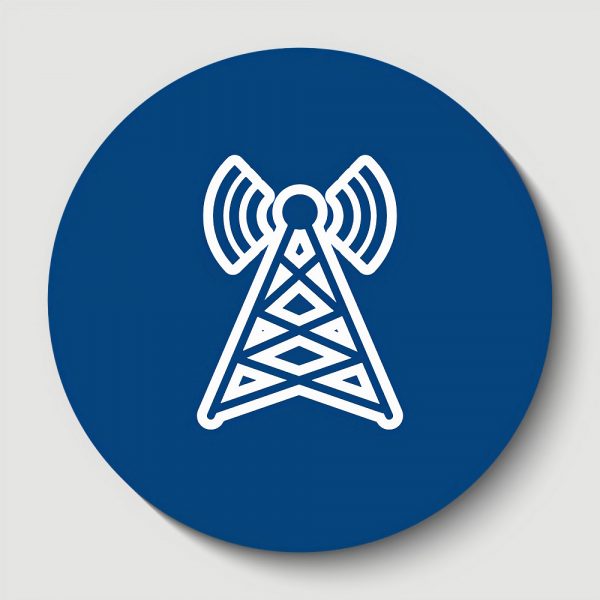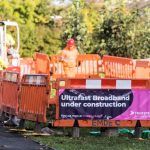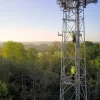Ofcom Clears 800MHz Power Boost to Aid UK 4G Mobile Coverage

Ofcom has today approved an earlier proposal – requested by both Three UK and EE (BT) – to increase the permitted power output for the equipment that UK mobile operators use in the 800MHz band, which is expected to result in a small coverage improvement for the related 4G data (mobile broadband) and calling services.
The change in technical conditions, which will also see power limits for licences being measured per antenna rather than per each individual piece of radio equipment, effectively brings the spectrum into line with the technical conditions that have already been applied to the 700MHz band for 5G services.
The 800MHz band is at the lower frequency end of mobile-friendly spectrum, which means that such signals are attractive for delivering wide geographic coverage (e.g. rural areas) – often at a lower cost – as they travel further and penetrate better into buildings. The catch is that you get less spectrum frequency to play around with, which means slower data speeds (bonding several bands via Carrier Aggregation can help this).
Advertisement
One condition of this licence change is that the use of these higher powers is subject to the operator having in place a mitigation scheme to protect Digital Terrestrial Television (DTT) viewers from undue interference should it occur, although the change is not expected to result in any serious issues on this front.
We have decided that it is appropriate to make a number of technical changes to the Spectrum Access 800 MHz licences to enable mobile network operators to improve their network coverage and increase capacity. These changes include:
Aligning the in-block transmit power limit with the recently awarded 700 MHz band. We have decided to allow an increase in the permitted base station transmit power from 61 dBm/(5 MHz) EIRP to 64 dBm/(5 MHz) EIRP. This is accompanied by a change to the way in which the power limit is referenced, moving from per radio equipment to per antenna. As part of this change, femtocells must implement power controls to minimise interference to adjacent channels. The use of these higher powers is subject to the operator having in place a mitigation scheme to protect Digital Terrestrial Television (DTT) viewers should interference arise.
To help facilitate equipment manufacturers make equipment that is capable of using both the 700 MHz and 800 MHz bands we have changed some of the out-of-band and out-of-block limits. This is to closer align the power limits with the technical conditions set out in the Spectrum Access 700 MHz licences and the European Conference of Postal and Telecommunications Administrations (CEPT) recommendation for the 800 MHz band.
We should add that all such licensees are required to show compliance with the internationally recognised guidelines on electromagnetic fields (EMF) for the protection of the general public. These guidelines are set by the International Commission for Non-Ionising Radiation Protection (ICNIRP) and ensure that these “sites are operated in a way that does not adversely affect people’s health.” Ofcom expect that, even if these operators use the increased power, the emission limits will remain well within the set guidelines.
Otherwise, Ofcom states that these changes should help “increase network capacity, facilitate the rollout of new antenna designs and improve geographic and in-building coverage capabilities of mobile networks.” In theory, that may also provide a little extra help for the £1bn Shared Rural Network (SRN) project, which primarily aims to help extend geographic 4G coverage to 95% of the UK by the end of 2025 (progress report).
Mark is a professional technology writer, IT consultant and computer engineer from Dorset (England), he also founded ISPreview in 1999 and enjoys analysing the latest telecoms and broadband developments. Find me on X (Twitter), Mastodon, Facebook, BlueSky, Threads.net and Linkedin.
« EE Offer Microsoft 365 Personal Smart Benefit on UK Mobile Plans





















































So when does this start happening then?
Is it consultation period starting now or do the providers have to prove the compliance with EMF regulations first before upping the strength?
Is it all 800mhz transmitters or just selected ones by the operator?
O2 use lot of 800mhz round here so that would be good if it got a bit of a boost.
The operators are now allowed to formally apply for it, so after today it’s really just a rubber stamping exercise.
Will be interesting how this effects the existing 800MHz, in respect to our 4G mobile broadband. Will it translate to a direct increase in bandwidth – or will it simply allow for a stronger signal when it comes to carrier aggregation of multiple bands?
Shame Three (SMARTY) removed b20 DD, 800MHz, locally for me.
Could this be why they’re removing band 20 masts?
Yes that Shared Rural Network doesn’t seem to be going well here, another mast proposed rejected this week which would of brought good coverage to approx 4000 people, council rejected as being in AONB despite serving a small Cotswold town.
Can’t imagine it’ll bring much speed difference, more just reach out further or is my logic wrong?
I’m on the edge of 800mhz, comes and goes. Hopefully I’ll get a tiny boost to make it stable